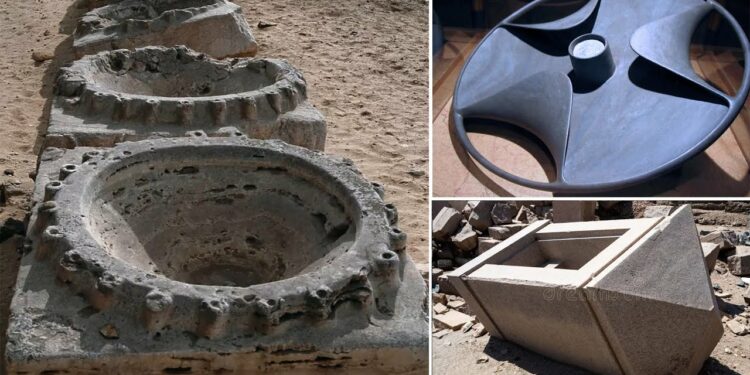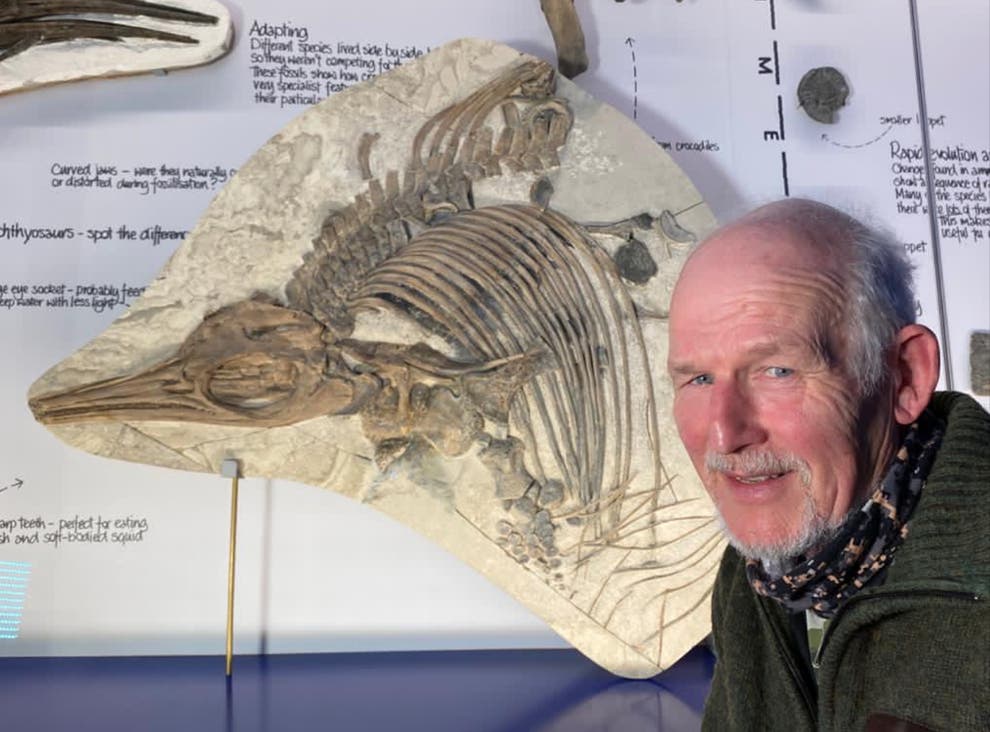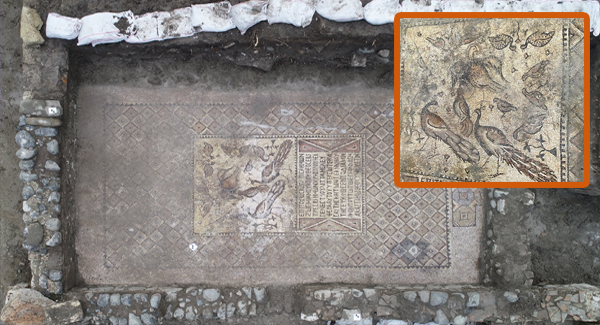Beneath the shadows of ancient pyramids and the desert sands, Egypt’s advanced technologies hint at a civilization far ahead of its time. Hieroglyphs and weathered monuments reveal a legacy of ingenuity that challenges our understanding of history. From structures suggesting global communication networks to artifacts hinting at knowledge of electricity and aviation, ancient Egypt’s technological prowess invites exploration. Join us as we uncover the most compelling cases of advanced ancient technology in Egypt.
The Osirion: An Enigmatic Underground Temple
Deep within Abydos, the Osirion, a mysterious underground temple, defies conventional Egyptian history. This sprawling complex, with massive granite blocks and precise craftsmanship, suggests a far older origin than the dynastic period. Unlike typical Egyptian temples adorned with hieroglyphs, the Osirion lacks inscriptions, prompting questions about its age and purpose. Could it be a remnant of a lost civilization?
The temple’s construction is awe-inspiring, with granite blocks weighing up to 100 tons, transported from Aswan quarries over 200 miles away and fitted with remarkable precision. The logistics of moving these colossal stones raise questions about whether the builders used advanced machinery or forgotten techniques. Adding to the mystery, water continuously flows within the Osirion’s chambers, defying efforts to pump it out. Hydrological studies reveal this water’s unique chemical composition, suggesting hidden chambers or an unknown source. Some theorize the Osirion was a center for advanced technological or spiritual practices, possibly a repository of ancient wisdom.
The Giza Power Plant Theory: Pyramids as Energy Generators
The Great Pyramid of Giza, standing 481 feet tall with 2.3 million limestone blocks (2.5–15 tons each), has long puzzled experts. Some propose it was not just a tomb but a technological marvel designed to harness energy. The pyramid’s base, covering 13 acres, is aligned with a deviation of less than 0.1% from a perfect square, and its interior includes conductive granite beams (up to 70 tons) and polished limestone, potentially acting as an insulator. This suggests the pyramid could function as a giant capacitor or battery.
The pyramid’s subterranean chambers and tunnels, possibly linked to the Nile River, may have been part of a hydraulic system to generate energy through water flow. Its location on an electromagnetic energy vortex and precise alignment with cardinal directions further support the idea that it channeled Earth’s natural energy fields, challenging traditional views of its purpose.
Obelisks: Potential Energy Transmitters
Egyptian obelisks, carved from single granite blocks and reaching up to 100 feet, are often linked to sun worship. However, some researchers suggest they served as energy transmitters within a larger power grid. The Lateran Obelisk in Rome, at 105 feet and 455 tons, exemplifies the advanced engineering required to quarry, transport, and erect these monoliths. Theories of acoustic levitation or anti-gravity technology have been proposed to explain their movement.
Obelisks’ alignment with cardinal directions, placement on energy vortexes, and use of conductive materials like gold and copper support the idea they transmitted energy generated by pyramids or other sources. Hieroglyphs on obelisks may even encode instructions for energy transmission, suggesting a sophisticated technological network.
The Great Sphinx: A Mysterious Monument
The Great Sphinx, with its lion’s body and human head, has captivated imaginations for centuries. Conventionally dated to 2500 BCE during Pharaoh Khafre’s reign, geologist Robert Schoch argues its water erosion patterns suggest an origin as early as 7000 BCE, during a wetter climate. This would reshape our understanding of Egyptian civilization. The Sphinx’s alignment with the equinox sun and seismic evidence of chambers beneath it fuel theories that it was part of a solar-powered or astronomical complex, possibly housing hidden mechanisms or artifacts.
The Saqqara Bird and Abydos Hieroglyphs: Theories of Ancient Flight
The Saqqara Bird, a 7-inch wooden statuette from 1898, resembles a modern airplane with aerodynamic wings and a vertical stabilizer. Egyptian doctor Khalil Messi built a scaled model, demonstrating its gliding capabilities, suggesting knowledge of aeronautical principles. Similarly, the Abydos hieroglyphs in the Temple of Seti I depict what appear to be helicopters, submarines, and airplanes. While some attribute these to palimpsests, others see evidence of advanced aerial or underwater technology. Additional carvings at Memphis and Abydos, showing pod-like objects and rotorcraft-like images, further fuel speculation of ancient flight.
Tutankhamun’s Meteoric Dagger: A Marvel of Metallurgy
Discovered in 1922 in Tutankhamun’s tomb, this iron dagger, crafted from meteoric iron with high nickel and cobalt content, showcases advanced metallurgy. Forging such a blade required sophisticated smelting and hammering techniques, thought to be developed later. The use of meteoric iron, considered sacred, highlights the Egyptians’ fascination with celestial materials and their symbolic significance. The blade’s precision, despite the brittleness of meteoric iron, underscores their exceptional craftsmanship.
Subscriber Pick: The Schist Disk
The schist disk of Sabu, a 2-foot-diameter stone object, features a complex design resembling modern machinery, with curved lobes, drill holes, and a central hub. Crafted from fragile metasiltstone, its precision suggests tools and techniques beyond ancient Egyptian capabilities. Some propose it was part of a centrifugal pump or turbine for irrigation or energy generation, hinting at advanced technology from a lost civilization.
The Dendera Light: Evidence of Ancient Lighting?
In the Hathor Temple at Dendera, carvings depict bulb-like objects with snake-like filaments and lotus-shaped bases, resembling modern light bulbs. The absence of soot in the temple suggests a clean light source, possibly electrical. Engineer Walter Garn’s replicas of these “Dendera lights” produced dim light, supporting the theory, though skeptics argue they are mythological symbols. The use of conductive materials and specific chamber layouts further fuels speculation of ancient electrical knowledge.
The Serapeum of Saqqara: Enigmatic Granite Boxes
Beneath Saqqara lies the Serapeum, a labyrinth housing 24 black granite boxes, each up to 100 tons, with precision-cut surfaces and fitted lids. Crafted from one of the hardest stones, their creation defies Bronze Age tool capabilities. Conventionally dated to the 13th century BCE for housing sacred Apis bulls, the absence of inscriptions or remains suggests a different purpose. The logistical challenge of moving these boxes through narrow tunnels hints at advanced engineering.
The Valley Temple of Khafre: Precision and Anomalies
Near the Great Sphinx, the Valley Temple of Khafre features massive limestone blocks (up to 150 tons) fitted with such precision that a blade cannot slip between them. Polished red granite facing, secured with square sockets and bosses, suggests advanced construction techniques not seen elsewhere. The lack of inscriptions raises questions about its age and purpose, with some proposing it was built by a pre-Egyptian civilization with lost technologies.
Egyptian Inventions: A Legacy of Innovation
Beyond monuments, ancient Egypt pioneered practical innovations. Papyrus revolutionized recordkeeping, while hieratic script enabled faster writing. In hygiene, they invented eye makeup, skin creams, perfumes, wigs, toothpaste, and breath mints. Their 365-day calendar, sundials, and water clocks advanced timekeeping, while their astronomical knowledge guided agriculture and rituals. In engineering, ramps, levers, and precise surveying enabled monumental construction. Agricultural tools like the shaduf and nilometer improved irrigation and crop planning. In medicine, the Edwin Smith Papyrus (1500 BCE) details trauma treatments, including sutures, honey-based infection prevention, and splints, while other papyri cover gynecology and more, blending empirical observation with magical incantations.
The Djed Pillar: An Enigmatic Symbol
The Djed pillar, linked to Osiris and symbolizing stability, resembles Nikola Tesla’s electrical designs, prompting theories of ancient electrical knowledge. Often depicted with power and energy in Egyptian art, it may represent electricity metaphorically. The use of conductive materials like gold and copper in temples, along with specific chamber layouts, suggests the Egyptians may have harnessed electrical currents, challenging traditional views of the Djed as purely symbolic.























